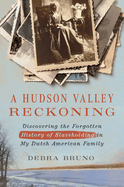
When journalist Debra Bruno learned that her Dutch ancestors, settlers in New York's Hudson River Valley in the 1600s, were "probably" slave owners, her "first reaction was defensive." Surely they were too poor and lived too far north. But when she traced her roots back to her "five times great grandfather," she was distressed to find that his 1796 will included his "slaves male and female" alongside his "land, horses, feather beds, and wagons."
"Grappling with this ancestral burden," Bruno became determined to research her family and the people they enslaved. A Facebook group, "I've Traced My Enslaved Ancestors and Their Owners," connected her with Eleanor Mire, a woman descended from enslaved people owned by Bruno's predecessors. Bruno and Mire, known as "linked descendants" in genealogy circles, enthusiastically shared their findings, discovered a common ancestor, and eventually visited her gravesite together.
In A Hudson Valley Reckoning, Bruno documents slavery in New York, where enslaved people accounted for 28% of the Catskill population in 1790, and the enactment of a murky 1817 abolition law, "with so many caveats and lingering restrictions," continued to deny emancipation to many. She includes recent attempts at reckoning with this history, such as the opening of Sojourner Truth State Park, and calls for more.
American history buffs may gasp when Bruno mentions familiar names, such as Petrus Stuyvesant, who created a thriving business by importing enslaved people to New York during the mid-1600s. Bruno might have collected these facts into a stuffy academic tome, but this history is a fast-paced read, replete with vividly depicted portraits of hundreds of lives. --Cheryl McKeon, Book House of Stuyvesant Plaza, Albany, N.Y.

